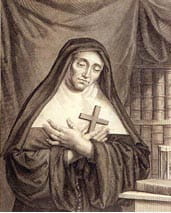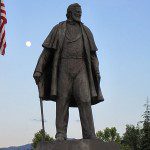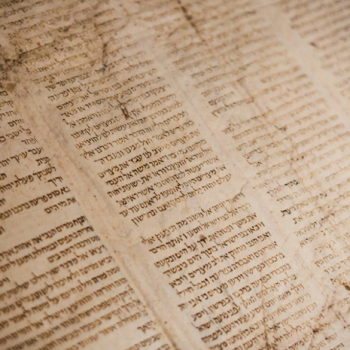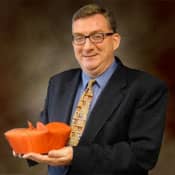 The story of France's missionaries in 17th-century North America is a great adventure tale, replete with danger, heroism, and martyrdom. And no one chronicled it better than Francis Parkman (1823-1893), who combined literary flair with high scholarship to create historical works that stand the test of time. In one noted passage, he describes the Jesuits in Canada:
The story of France's missionaries in 17th-century North America is a great adventure tale, replete with danger, heroism, and martyrdom. And no one chronicled it better than Francis Parkman (1823-1893), who combined literary flair with high scholarship to create historical works that stand the test of time. In one noted passage, he describes the Jesuits in Canada:
Men steeped in antique learning, pale with the close breath of the cloister, here spent the noon and evening of their lives, ruled savage hordes with a mild paternal sway, and stood serene before the direst shapes of death.
Yet Parkman, a New England Protestant, was uneasy about Catholicism itself, which offered "so much to be admired and so much to be detested." One person he greatly admired was Sister Marie of the Incarnation (1599-1672), who served in Canada for four decades and displayed "ability, a fortitude, and an earnestness which command respect and admiration." She was, in short, "a woman to the core."
 Born to a bourgeois family in Tours, Marie Guyart was interested in religious life, but her parents had other plans. At 17 years old, she married Claude Martin, a merchant. Although not a happy marriage, it didn't last long. Marie was widowed at 19 with a son. She took a hand in running the family business, proving a capable manager.
Born to a bourgeois family in Tours, Marie Guyart was interested in religious life, but her parents had other plans. At 17 years old, she married Claude Martin, a merchant. Although not a happy marriage, it didn't last long. Marie was widowed at 19 with a son. She took a hand in running the family business, proving a capable manager.
Through the years, the longing for religious life remained. When her son was older, she decided to pursue her vocation. At first she considered the monastic life, but she chose the Ursulines, founded in 16th-century Italy as the first women's teaching community. Joining them at age 33, she took the name Sister Marie of the Incarnation.
At this time, the French Church experienced an incredible vitality. It produced classics like St. Francis De Sales' Introduction to the Devout Life; saints like Vincent De Paul, "the father of the poor;" religious communities that founded schools and universities, cared for the poor and sick, and sent abroad missionaries who, driven by a profound fervor, considered martyrdom a prize in the war "to win souls for Christ."
As Marie read the Jesuits' accounts of their work in Canada, she felt a strong desire to go there. In her private writings, she pleaded directly with God:
I am learned enough to teach of Christ to all the nations. Give me a voice powerful enough to be heard at the ends of the earth, to say that my divine Spouse is worthy of reigning and being loved by all hearts.
For six years, she taught school. As the Jesuits asked for "some brave mistresses" to teach in Canada, Marie was chosen with two other Sisters. They departed in May 1639. She had no illusions. Considering the possible dangers, she wrote: "I find no change at all in the disposition of my spirit."
Along the way they avoided icebergs and the Spanish fleet. In August they arrived in Quebec to a hero's welcome. They set up shop in the lower part of the town. One Sister recalled: "Our dwelling was so small that a room sixteen feet square served at once for choir, parlor, cells, and refectory; and another little apartment was the class-room." They had established the first Catholic school in North America.
Marie served for eighteen years as Mother Superior, guiding the community through poverty, natural disasters, and "Indian wars." Parkman asks, "How did these women bear themselves amid toils so arduous?" A lot had to do with Marie's leadership. When some of the Sisters considered going home, she told them she had "an extreme aversion to returning to France, and had a greater love than ever for her vocation." The Sisters stayed.
Marie was an exceptional organizer and fundraiser, whom one historian calls "a mystic imbued with a sense of action." A biographer suggests that if she hadn't entered religious life, "she might have been an esprit fort born to control thousands."She combined intellectual acumen with common sense, tact with kindness. A contemporary recalled that "no one ever looked upon her without a feeling of reverence."
Like the Jesuits, the Ursulines didn't impose their culture on the indigenous peoples they encountered. They studied Native languages, which Marie grasped surprisingly quickly. In time, she produced a catechism in three different languages, dictionaries for two, and devotional works—all, sadly, lost to fire. Her Ursulines were among the first religious to receive Native North American vocations, beginning in 1656. They also trained lay leaders, some of whom suffered martyrdom.
A profound mystic and gifted leader, Marie had her quirks. For example, she was said to have no sense of humor. Nor did she have patience either for talkative people or for men. She advised her Sisters to "bear with man for the sake of God." Nevertheless, the hallmark of her life and ministry was courage coupled with profound trust:





